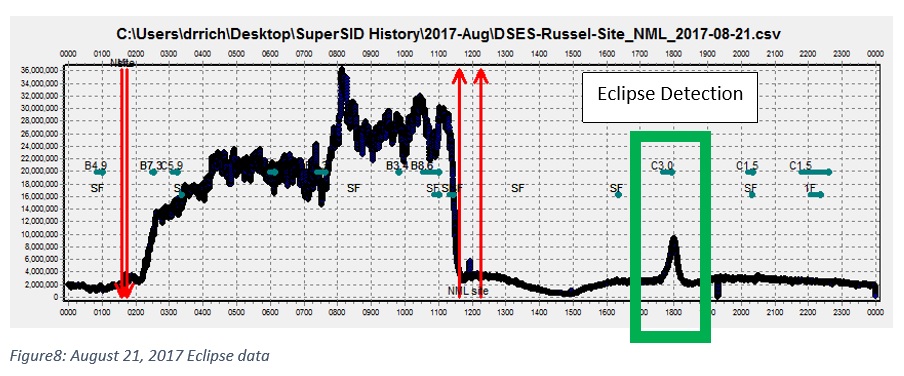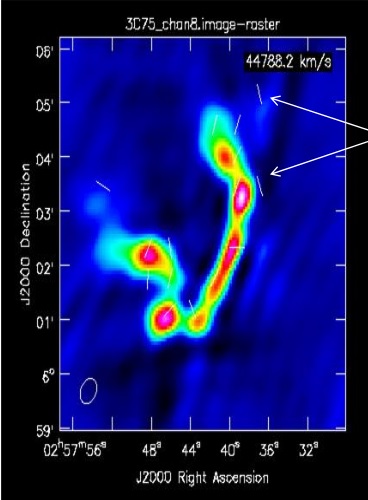Deep Space Exploration Society (DSES) SuperSID station measures the August 20, 2017 Solar Eclipse!
[ http://dses.science/wp-content/uploads/2017/07/Eclipse-SuperSID-Results.pdf ]
DSES President Dr. Richard Russel has been measuring signal strengths 0f stations in the Very Low Frequency (VLF) band for the past year, looking for changes in ionospheric propagation due to solar flares. He uses a Sudden Ionospheric Disturbance (SID) monitor small radio telescope. His SID detector is located in Colorado Springs, CO. The measurements are sensitive to the changes in radio propagation at sunrise and sunset.
With his baseline of historical data at sunrise and sunset, he then predicted what could be expected during the August 20, 2017 solar eclipse. He presented his prediction work at the 2017 Society of Amateur Radio Astronomers Annual Conference at NRAO Greenbank, WV on July 25, 2017. His paper was titled, “Ionospheric Reflection Variation During Sunrise and Sunset and Predictions for the 2017 Total Eclipse”.
During the eclipse he made measurements, and found the results matched closely with his predictions. The link presents a summary of his work. Plus it has YouTube links to this and another of his talks at the SARA conference. The second talk is titled, “The Use of Monte-Carlo Analysis to Evaluate Radio Astronomy Source Detection”.

Also see this Daily Mail article, NASA Scientists to Study the Ionosphere During the Eclipse (August 10, 2017).


